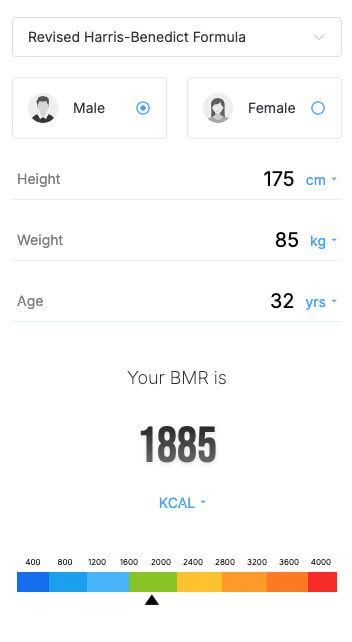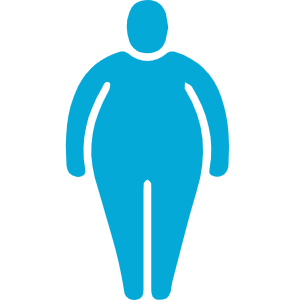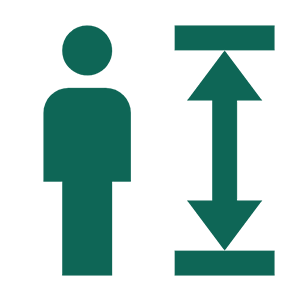BMI vs. BMR: Which Is More Crucial for Weight Loss and Management?
BMI and BMR are two health metrics that are frequently mentioned, but what exactly is the difference between them? For those looking to lose weight or better manage their body weight, understanding these two indicators is crucial. In this article, we will explain the concepts of BMI and BMR in simple terms, clarify their individual purposes, and show you how to use them together to achieve your health goals. Whether you're new to these concepts or looking to dive deeper into weight management, this article will provide you with practical advice and tools.
What is BMI, and how should I understand it?
BMI (Body Mass Index) is a simple tool used to determine whether your weight falls within a healthy range. It calculates a number based on your height and weight, giving you a quick idea of your current weight status. For example, if you’re 170 cm tall and weigh 70 kg, your BMI would be about 24.2. According to BMI charts, this means you’re in the normal weight range.

For most people, BMI is an easy-to-use indicator that helps you quickly assess if you’re overweight, underweight, or in a healthy range. It’s especially useful if you’re planning to start a weight loss or weight gain program.
However, while BMI is convenient to calculate, it has its limitations. For instance, it can’t differentiate between fat and muscle. If you’re someone who exercises regularly, your BMI may show as high, but this doesn’t necessarily mean you’re unhealthy. Many athletes have higher BMIs simply due to their muscle mass, not excess fat. So, BMI is a good reference point, but it doesn’t fully represent your overall health.
What is BMR, and how does it help with weight management?
BMR (Basal Metabolic Rate) is the number of calories your body needs to maintain basic life functions while at rest. In simple terms, BMR tells you how much energy your body requires each day just to function, without any additional activities.
For example, if your BMR is 1500 calories, that means your body needs 1500 calories daily just to support basic functions like breathing, heartbeat, and maintaining body temperature. Understanding your BMR is crucial when planning to lose, gain, or maintain weight. It helps you know how many calories you should consume to support your body’s daily needs.
If your goal is weight loss, knowing your BMR can help set your daily calorie intake. For instance, if your BMR is 1500 calories and you burn an additional 500 calories through daily activities, your total daily energy expenditure (TDEE) would be 2000 calories. To lose weight, you can aim to consume around 1800 calories daily, creating a calorie deficit to help you gradually lose weight. On the other hand, if you’re looking to gain weight, you’d need to increase your calorie intake beyond what you burn daily.
BMI vs. BMR: Which is more useful for weight loss?
BMI and BMR are two different tools with distinct purposes. BMI helps you understand whether your current weight falls within a healthy range, allowing you to assess if you're underweight, overweight, or within a normal weight range. BMR, on the other hand, helps you determine how many calories your body needs daily, which is especially useful when planning to lose or gain weight.
Why BMR is more critical during weight loss
When it comes to losing weight, BMR is more essential than BMI. BMR helps you determine how many calories you should consume daily to create a calorie deficit, which is necessary for weight loss. For example, if you know your BMR is 1600 calories and you burn an additional 400 calories through activities, you would need to consume fewer than 2000 calories to lose weight.
Why relying only on BMI isn't enough
Focusing only on BMI can sometimes lead to misunderstandings about your health. For instance, two people with the same weight might have the same BMI, but one may have more muscle and less fat, while the other has more fat and less muscle. BMI is a rough estimate of your weight status, but BMR provides a more accurate picture of your daily energy needs, making it a more practical tool for weight loss and maintaining overall health.
The benefit of using BMI and BMR together
For effective weight management, using both BMI and BMR together can be highly beneficial. BMI gives you a general idea of whether your weight is in a healthy range, while BMR helps you create a tailored diet and exercise plan. If your BMI indicates that you’re overweight, you can use your BMR to set your daily calorie intake and ensure you’re consuming fewer calories than you’re burning. This way, you can create a calorie deficit and gradually lose weight in a sustainable, scientific way—without resorting to extreme dieting.
How to use BMI and BMR for weight loss
Step 1: Assess your current weight
Start by using BMI to calculate your body mass index and determine whether your weight is in a healthy range. If your BMI indicates that you’re overweight or underweight, this will be the foundation for setting your weight loss or weight gain goals.
Step 2: Determine your daily calorie needs
Use your BMR to calculate how many calories your body needs at rest. Then, estimate your total daily energy expenditure (TDEE) by factoring in your daily activities. You can use an online BMR calculator to easily calculate both your BMR and TDEE.
Step 3: Set a daily calorie intake goal
If your goal is to lose weight, make sure your daily calorie intake is lower than your total daily energy expenditure. For example, if your TDEE is 2000 calories, aim to consume around 1700–1800 calories per day to gradually lose weight.
Step 4: Create a balanced diet and exercise plan
While reducing your calorie intake, make sure to maintain a balanced diet that includes enough protein, vegetables, and healthy fats. Additionally, incorporating regular exercise can boost your daily calorie burn and speed up your weight loss progress.
Step 5: Track and adjust regularly
Recalculate your BMI and BMR periodically as your weight changes, and adjust your diet and exercise plan accordingly to ensure you’re continuing to move toward your health goals.
Step-by-Step Guide to Calculating BMI and BMR
Steps to Calculate BMI
- Measure your height and weight: Use a height measurement tool and a scale to accurately measure your height (in meters) and weight (in kilograms).
- Calculate BMI: Use the following formula:
- Interpret the results: Based on your BMI number, you can determine if you are underweight, in the normal range, overweight, or obese.
- Use an online tool: To make the process easier, you can use HealthyCalc’s BMI Calculator. Just enter your numbers, and it will calculate your BMI for you.
Steps to Calculate BMR
- Measure your height, weight, and age: Use a scale to measure your weight (in kilograms) and have your height (in centimeters) and age ready.
- Choose a BMR formula: There are several formulas for calculating BMR, but the most commonly used is the Harris-Benedict equation.
For men:
$$ BMR = 88.362 + 13.397 \times \text{Weight(kg)} + 4.799 \times \text{Height(cm)} - 5.677 \times \text{Age(years)} $$For women:
$$ BMR = 447.593 + 9.247 \times \text{Weight(kg)} + 3.098 \times \text{Height(cm)} - 4.330 \times \text{Age(years)} $$- Calculate your BMR: Plug your data into the formula to get your BMR. For example, for a 30-year-old male who is 170 cm tall and weighs 70 kg, the BMR would be:
BMR = 88.36 + (13.4 * 70) + (4.8 * 170) - (5.7 * 30) = 1675.66 calories
- Use an online tool: If you prefer not to calculate manually, you can use HealthyCalc’s online BMR calculator. Just enter your data, and it will provide you with the results.
Real-Life Example: How BMI and BMR Helped Someone Lose Weight
At my fitness studio, I worked with a 32-year-old client who stood 175 cm tall and initially weighed 85 kg. His BMI was calculated to be 27.8:
$$ {\text{BMI}} = \frac{\text{85(kg)}}{\text{1.75(m)}^2} = 27.8 $$This result indicated that he was overweight, and his body fat percentage was high, showing that excess fat was the main reason for potential health risks.
To help him lose weight effectively, we first calculated his BMR:
$$ BMR = 88.362 + 13.397 \times 85(kg) + 4.799 \times 175(cm) - 5.677 \times 32(years) = 1885 calories $$
This meant that he needed about 1885 calories a day to maintain basic physiological functions while at rest.
When creating his weight loss plan, we combined dietary control with strength training. Since his daily activity level was moderate, his Total Daily Energy Expenditure (TDEE) was around 2921 calories. To lose weight, we reduced his daily intake to around 2400 calories, creating a deficit of approximately 500 calories per day. He also engaged in strength training four times a week and did cardio twice a week to maintain muscle mass and boost metabolism.
Results:
- First Month: Through dietary control and consistent training, the client lost 3 kg in the first month, reducing his weight to 82 kg.
- Third Month: After three months of persistence, his weight dropped to 78 kg, lowering his BMI to 25.5.
Although his BMI remained slightly high, this was primarily due to an increase in muscle mass, while his body fat percentage dropped significantly, indicating improved health. Through strength training, his muscle mass increased, keeping his BMI slightly higher, but this didn’t mean he was unhealthy.
Frequently Asked Questions
What are BMI and BMR, and why should they be used together?
BMI and BMR are tools used to assess your weight and determine your daily energy needs. Using them together helps you understand your weight status while also allowing you to control your diet based on your energy expenditure, making weight management more effective and scientific.
Why does my BMI show I'm overweight, but I don’t feel like I am?
This could be due to having a higher muscle mass. BMI only takes into account your weight and height and doesn't distinguish between fat and muscle. Therefore, for people with a lot of muscle, BMI may show a higher value, but this doesn’t necessarily indicate poor health.
How can I set weight loss goals based on my BMR?
Once you know your BMR, add the calories burned from daily activities to determine your total energy expenditure. To lose weight, you can aim to consume fewer calories than your total expenditure, creating a calorie deficit. It’s generally recommended to maintain a deficit of around 500 calories per day to ensure safe and healthy weight loss.
Why can’t I lose weight even after dieting?
Excessive dieting can cause your BMR to decrease as your body goes into energy-saving mode, reducing energy expenditure and slowing weight loss. Additionally, long-term dieting can lead to muscle loss, which lowers your metabolic rate. Healthy weight loss should involve a balance of controlled eating and increased physical activity to achieve gradual results.
What should I do if my BMI is normal but my body fat percentage is high?
If your BMI is within the normal range but your body fat percentage is high, it likely means you have a lower muscle mass. To improve your body composition and reduce body fat, it’s recommended to incorporate strength training into your routine, which can help increase muscle mass and lower your body fat percentage, leading to a healthier overall physique.
How can I increase my BMR?
You can increase your BMR by building muscle through strength training since muscle burns more calories than fat. Staying hydrated, eating regularly to maintain metabolic activity, and avoiding extremely low-calorie diets are also important to prevent a decrease in your basal metabolic rate.
References












 EN
EN









